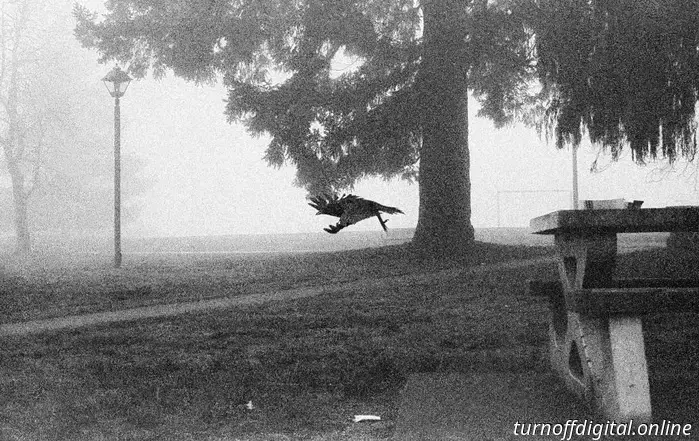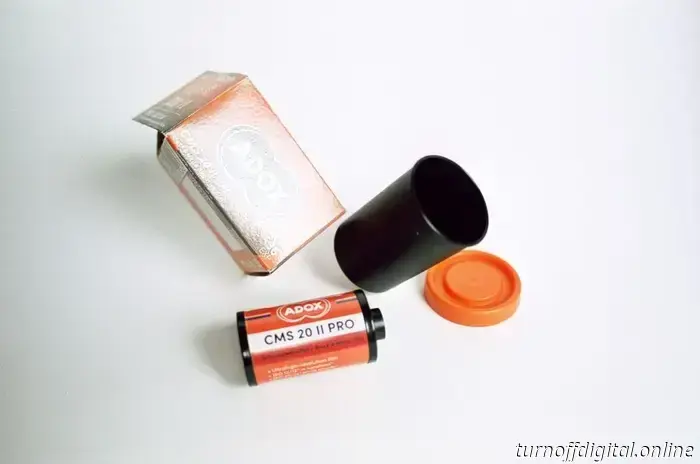
Ilford HP5+ is a nearly ninety-year-old black-and-white film renowned for its adaptability, sharpness, and consistent response under various development techniques. Many photographers appreciate the ability to push-process it and occasionally pull-process as well. However, to my knowledge, no one has taken it to such an extreme; consequently, this may be the first instance of someone demonstrating this approach and the resulting images with HP5+ treated as if it’s an ISO 100,000 film. As observed, the outcomes aren’t as pristine as those achieved with standard development methods. I find them usable, having seen worse, though opinions may vary. Regardless, the image is present. This article serves as a continuation of yesterday’s experiment where HP5+ was pulled to ISO 3; while that process was relatively straightforward, I wouldn’t necessarily advise attempting what I’m about to share. Nevertheless, this resource includes all the techniques and recipes needed to replicate the experiment, along with recommended development times for HP5+ at EI 12800, 25600, and 51200.
In this article: An explanation of what it means to push film and the typical procedures involved; reasons for shooting HP5+ at an ISO 100,000; metering for EI 100,000; development times and techniques; scanning and post-processing; additional samples; and the conclusion. Support this blog & enjoy premium features with GOLD memberships! — The HP5+ formula will be 94 years old in 2025, considering dry plates. It was launched in 1931 under the name Ilford HP, which stands for Hypersensitive Panchromatic. This is the fifth updated version of the film.
Ilford HP5+ exposed at EI 100,000.
What does it mean to push film, and how is it typically done? In my earlier article, I discussed this in some detail and provided a dedicated guide that addresses this question. In essence, while there is a recommended ideal film speed, we can alter it by adjusting development times, temperatures, and chemical dilutions. For instance, although Ilford HP5+ is rated at ISO 400, it can be metered as ISO 200 or ISO 800 and developed accordingly for accurate exposures.
As expected, there are limits to how much we can push (developing film to mimic higher ISO values) or pull it. At some threshold, the film begins to exhibit various artifacts, including larger grain or, in worse cases, the absence of an image altogether. In this article, I will push HP5+ further than anyone has previously attempted or at least document it online successfully.
Why would anyone shoot HP5+ at an ISO 100,000? Increasing film sensitivity to such levels can assist photographers in capturing images in darker settings. Less light also allows for the use of faster shutter speeds and smaller apertures. For example, the photograph at the beginning of this article depicts a crow that has just launched off a table; it shows no motion blur (as it was captured with a 1/4000s shutter speed) and no depth blur (everything is in focus, from the table about 1m/3’ away to the light post roughly 10m/33’ distant — shot at 𝒇16).

Here's the Spanish translation of the provided text: If you are looking to grow your law firm in 2024, digital marketing is non-negotiable. The era of relying on referrals and print ads is fast disappearing. Digital marketing for law firms has quickly become the new standard for reaching out to the public

The demand for cosmetic surgery among men grows by 25% .The demand for cosmetic surgery has grown by 25 percent among men over the last five years in Catalonia, as revealed by the first study on this medical specialty conducted as part of the celebration of the 50th anniversary of the Catalan Society [...]

In this review, I discuss my experience with shooting and processing this film using both the specialized Adotech CMS IV developer and the non-specialized Ilford DD-X. I also cover its technical specifications and present the outcomes of my effort to create a 400-megapixel scan, which is the highest resolution I can achieve with my existing hardware and software.

what is marketing automation and how to use marketing automation to grow your plastic surgery practice.Marketing automation is like going on a cruise. You want everything to be fun and lighthearted, carefree and stress-free. Cruise ships are designed to give their guests this kind of pleasure. [...]

The luxury travel market is undergoing a significant transformation as discerning travelers seek more than just a vacation - they crave tailored experiences that meet their individual desires and aspirations. To connect with these high-end customers and drive bookings, luxury travel brands are leveraging [...]

Ilford HP5+ is a ninety-year-old black-and-white film renowned for its versatility, sharpness, and consistent reaction to different development techniques. Many photographers enjoy push-processing it and occasionally pull-processing it. However, to the best of my knowledge, no one has ever pull-processed it to this degree; therefore, this could be the first instance of anyone presenting the technique and results using HP5+ as if it were an ISO 3 film.
This article serves as a continuation of yesterday's experiment involving pulling HP5+ to ISO 3. While the previous task was relatively straightforward, I cannot necessarily endorse attempting what I am about to discuss. Nevertheless, this resource includes all the techniques and recipes needed to recreate the experiment, along with recommended development times for HP5+ at EI 12800, 25600, and 51200.